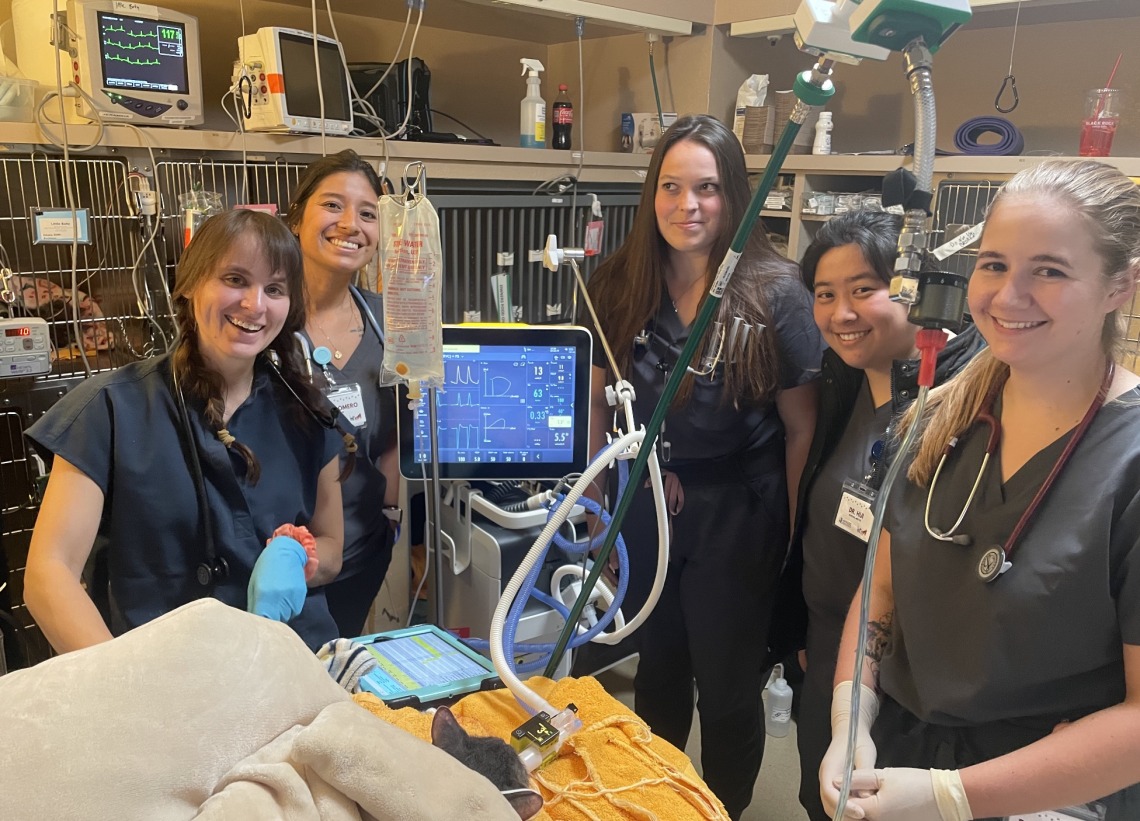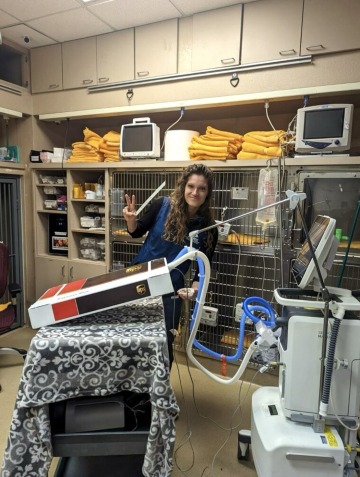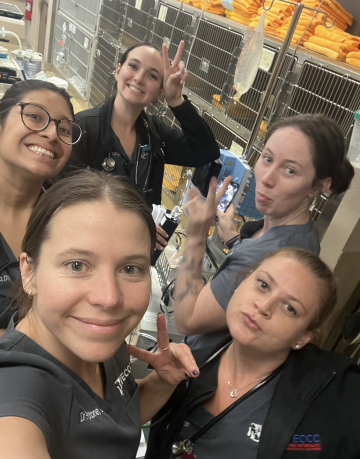An Insider's Look into Arizona Veterinary Emergency & Critical Care
At Arizona Veterinary Emergency & Critical Care Center, students encounter excellence in emergency medicine.

Third-year veterinary students at the University of Arizona College of Veterinary Medicine visit an array of incredible clinical sites as they sharpen their clinical skills and develop the traits they need to become day-one-ready veterinarians. At Arizona Veterinary Emergency & Critical Care Center, students encounter excellence in emergency medicine. We spoke with Internship Director and Head Preceptor, Dr. Tereza Stastny, DACVECC, who is one of the doctors responsible for overseeing and mentoring the veterinary students onsite.
Dr. Stastny found her passion for critical care during a rotating internship at Texas A&M, and her skill and interest in the field have only grown since. The adrenaline rush, intellectual stimulation, and the rewarding nature of helping critical patients drew her to the field and made her an outstanding mentor for students interested in emergency and critical care. Always looking for opportunities to provide incredible care and make an impact, Dr. Stastny is focused on examining the puzzle pieces of a case and solving problems with specialized skills. She shared,
“Emergency and critical care is this perfect balance between quick decision-making in the ER and meticulous adjustments to treatment plans in the ICU, all while prioritizing comprehensive patient care. The intellectual challenge, coupled with the opportunity to build connections with both pet owners and patients, while sharing knowledge through teaching, makes it an incredibly rewarding profession.”
The Student Journey

Dr. Tereza Stastny teaches mechanical ventilation concepts on a simulator.
Various specialties are housed under one roof at AVECCC, offering students exposure to radiology, oncology, internal medicine, cardiology, and the critical care unit, described by Dr. Stastny as the “hub” of the hospital.
Students can participate in two types of clinical rotations at this site: Emergency (ER) and Intensive Care Unit (ICU). In the emergency rotation, students are immersed in emergency cases from day one, involving work in client communication, physical examinations, and triage. Students are encouraged and expected to participate in creating problem lists and treatment plans, as this develops their critical thinking skills in medicine. The learning process unfolds as students present cases to interns and critical care specialists like Dr. Stastny. In the collaborative environment at AVECCC, students actively participate in determining diagnoses and crafting treatment plans, integrating client communication and financial aspects seamlessly.
The ICU rotation also immediately delves into the daily routine, starting with early morning didactic rounds and continuing with hands-on experiences in various areas. Students actively engage in patient assessments, performing physical exams and point-of-care ultrasounds under the mentorship of skilled onsite veterinarians.
A Vital Learning Experience

Dr. Stastny highlighted the significance of hands-on experiences, including procedures like thoracentesis and exposure to diagnostic tools such as ultrasounds and CT scans. Students actively contribute to planning and decision processes, fostering a sense of responsibility and competence. The professionals at AVECCC are committed to sharing their veterinary knowledge with the next generation, offering mentorship that gives students a window into the daily work of emergency and critical care specialists. Dr. Stastny discussed the importance of mentorship in students’ educations and careers, saying,
“The cornerstone of my professional development has been the presence of exceptional mentors. I would have never become a Criticalist without professors and role models who inspired me along the way. This is why I believe it's invaluable for aspiring students to train in a hospital setting with numerous critical care specialists, trainees, interns, and residents. It mirrors the environment of a teaching hospital found in universities, fostering a culture of continuous learning and mentorship, and empowering young doctors to fulfill their ambitions.”
While some students may not plan to enter the emergency and critical care field, the knowledge they gain at AVECCC is highly valuable. Some students may discover their passion for this field while onsite. Others may learn of techniques and treatments for which they can refer patients, offering more comprehensive care options for pets.
One example of this, shared by Dr. Stastny, is mechanical ventilation for pets who need it. Not many emergency veterinary clinics offer this specialized treatment, which is available at AVECCC. Dr. Stastny has developed a particular interest in this treatment option and ensures students understand how it works and when to offer this option to clients. While some students may work as general practitioners, knowing the treatment options available at emergency or specialty centers helps students provide more comprehensive care options to clients. The hospital’s supportive and teaching-focused environment plays a crucial role in students’ growth.
VetCats in Practice
The critical care specialists at AVECCC are passionate about sharing their insight and encouragement with the VetCats who complete a clinical rotation here. Dr Stastny shared her experience working with the students onsite. She said,
“They're always eager to learn and are adapting well to the environment. Initially, it can be a bit overwhelming due to the high volume of cases and case complexity. However, they [students] receive a lot of support throughout the process. By the second, third, and fourth weeks, they integrate well into the team. It is important for them to be exposed to this type of clinical setting. They are doing well!”
The professionals at Arizona Veterinary Emergency and Critical Care Center are committed to providing high quality care and sharing their insight with developing veterinarians.
Under Dr. Stastny and the other highly qualified veterinarians at AVECCC, VetCats are developing necessary skills, gaining insight into care options they may have never encountered, and preparing to become day-one-ready veterinarians serving their communities. Whether or not they plan to go into critical care, the knowledge they gain here is invaluable for their future careers.
